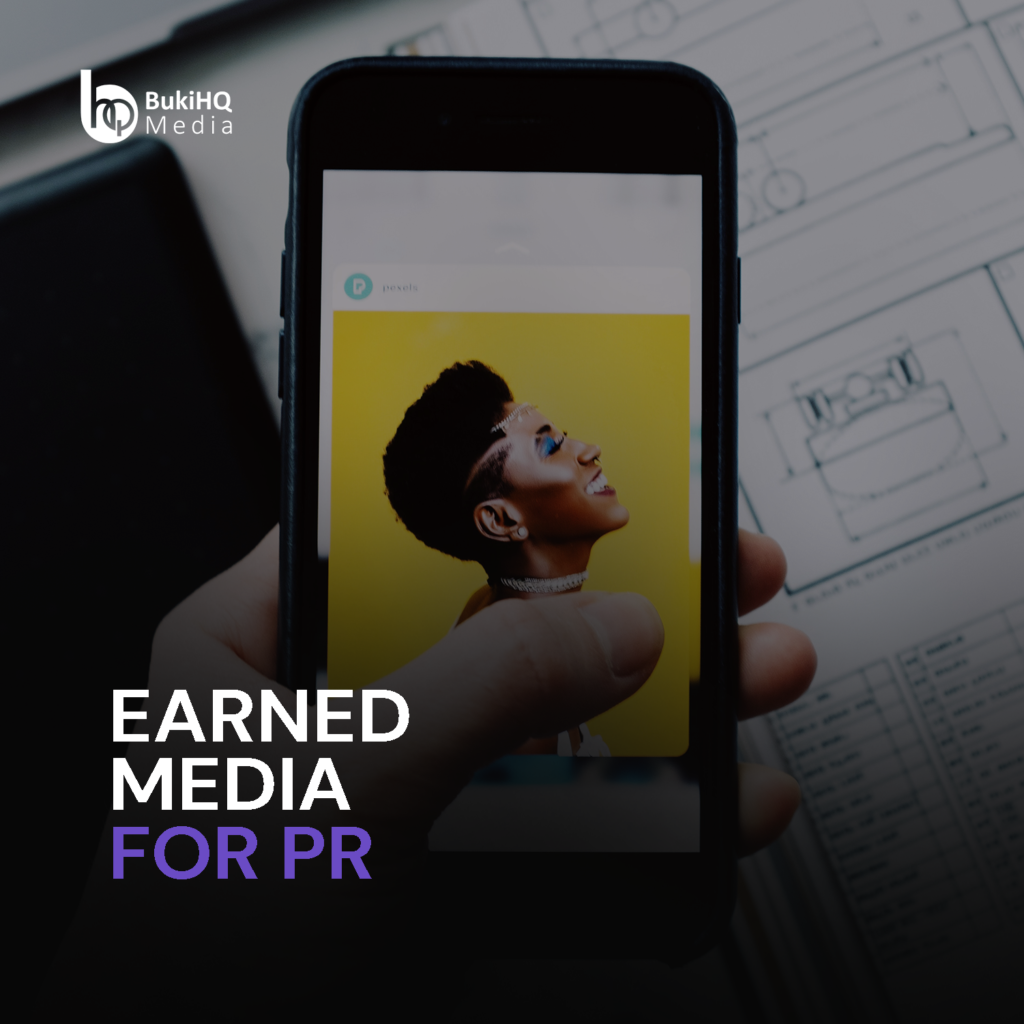
Earned media is the organic news coverage your company receives. Earned media, usually nicknamed publicity is any material written about you or your business that you haven’t paid for or created yourself. It’s not paid for like advertising and therefore your actions alone “earned” you this attention.
Earned media is not paid media, neither is it bought; it’s the outcome of having a product or service that other people want to talk about; it is free. Paid media, such as advertising, is promoted because you paid someone or a company to do that for you. The main difference is the price.
With earned media, first, you must attract the interest of the gatekeepers i.e influencers, media brands, or your fans – who hold the key to accessing their audiences and talking about your company and publishing your content.
Social media mentions, media coverage, and reviews on your product or service are all examples of earned media used in public relations. Earned media happens naturally, and it’s a result of good PR.
Methods of Earned Media
a. Press releases
- A press release is one of the most common pieces of writing used in public relations. When PR experts write clear and concise press releases and share them with a reporter, the reporter may find the information newsworthy and share the news with his or her audience. The news release itself is owned media, and the outcome is earned.
b. Media pitches
- For media pitches, an email is sent to a reporter highlighting the importance and newsworthiness of a story in hopes the reporter will write about it.
c. Submitted articles
- Submitted articles are written on behalf of a client and submitted for publication.
d. Customer reviews and testimonials
- How customers express their feelings about a product they’ve used is paramount to earned media. Loving or hating a product, this information can be made known in writing via reviews on review sites. Every review about you is earned media.
e. Mentions on any social media platforms e.g Twitter
- Twitter revolves not just around trending topics worldwide but also broadcast thoughts on issues related to different people’s industries. A tweet, therefore, is a tiny instance of earned media. But it depends on whom the tweet comes from.
f. Word-of-mouth recommendations both in-person and digital
- Today, this continues to be as free and impactful. Every time your business affects a customer, whether that effect is good or bad, you earn a place in day-to-day conversation.
g. Magazine and newspaper articles
- Newspapers and Magazines, both in print and online, constantly share big community developments that impact people both locally and nationally.
h. Shares of your content or any content about your brand or business
i. Blog posts about your business or product
WHY EARNED MEDIA IS IMPORTANT
There are multiple and countless firehoses gushing information at us all the time, hence, your audiences/fans need an effective filter or they’ll simply drown. Once earned media is gained, you are more likely to get through your audience’s filters.
- Credibility: Earned media supports your credibility and gives you third-party credibility. Someone who isn’t paid by your company and believes enough in your products, insights, etc. to mention, quote, or promote your brand’s content, your company will earn your customers’ trust through product reviews and word-of-mouth, not an advertisement where someone is paid to say how great your company is. Earned media is a reflection of your company’s integrity, reliability, and character.
- Brand Reach: Earned media also enables your brand to reach a wider audience; an audience that may not know about you but can benefit from your content, products, or services.
3 WAYS TO GENERATE EARNED MEDIA
1. Engaging influencer marketing
An influencer publishing your content or talking about your content is Earned Media. In turn, the influencer’s audience has the potential to become your audience.
It is paramount to ensure the influencer outreach stands out. In contacting influencers, research on what topics they write about, what they share on social media, what channels they use, how they interact with their followers, etc has to be done.
With that information, a pitch can be crafted that shows you know who the influencer is and how they communicate with their audience. Show how your brand and content would be valuable and helpful to their audiences.
2. Participating in industry trade shows
One of the best ways to get people talking about your brand and sharing your content is to be present at industry events attended by your audience. You need to create and distribute your content – in text, visuals, video, and in-person throughout the event.
3. Engage your fans and advocates
Strengthen your relationships with the people who are talking about your brand, sharing your content, etc. Your employees can be fans/advocates too. Share your news and wins with your traditional media contacts. It’s an opportunity to remind them that your brand is a quality company and credible third parties recognize that value.
Simply put, earned media may take more work because you are not in control of the process and decision-making, it is however a major component of your content marketing strategy.

